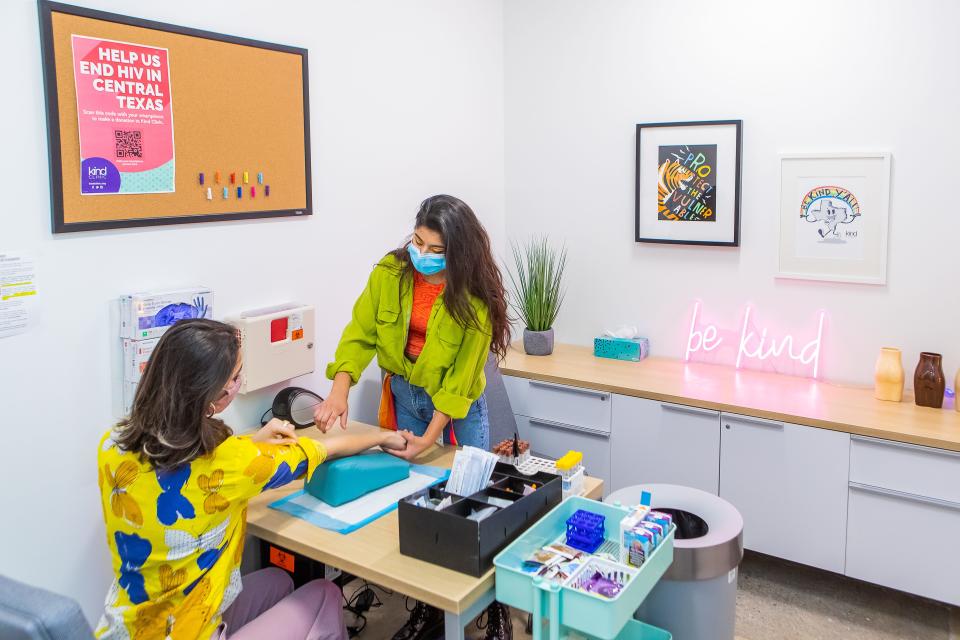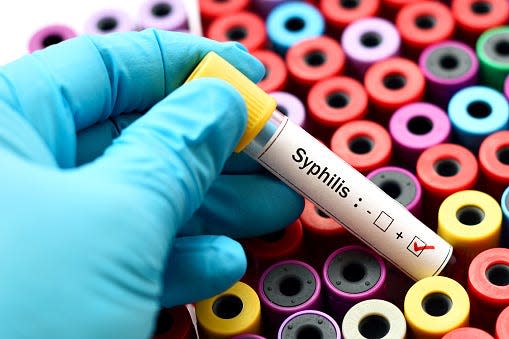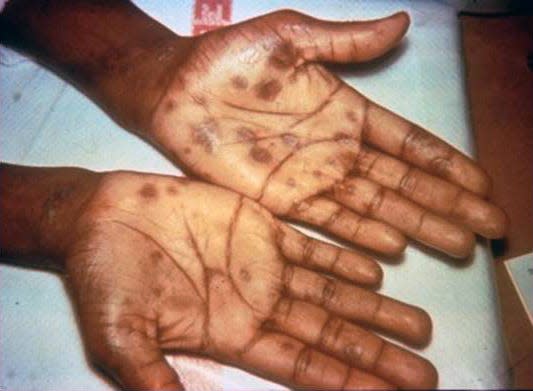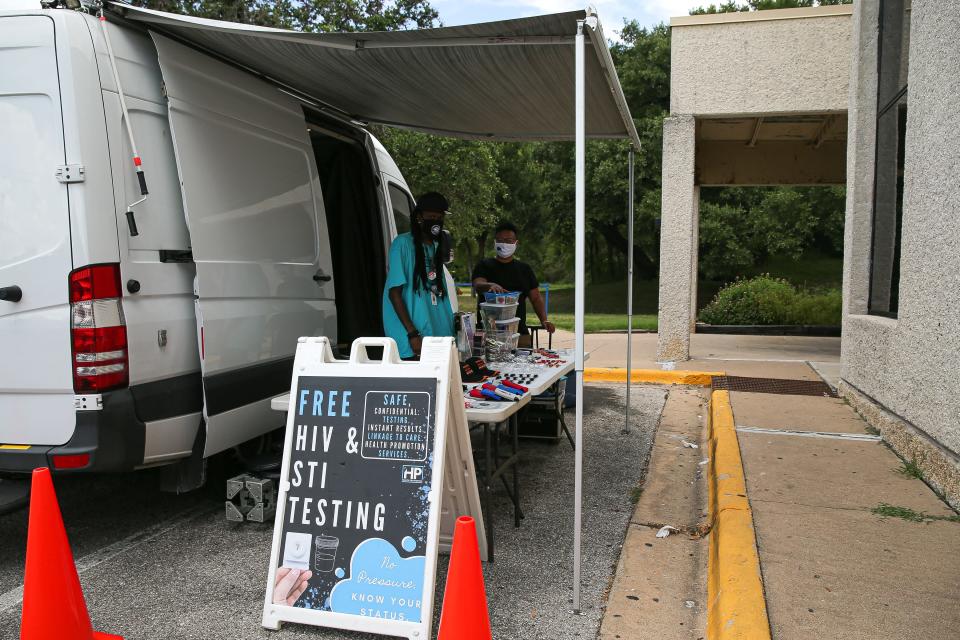Why are syphilis rates rising in Austin? What you need to know about surge in cases.
We're about to make you uncomfortable.
The rates of syphilis are up almost 80% from 2018 to 2022 nationally, and the rates of congenital syphilis, seen in babies born with it as it passes from mother to child through the placenta, are up 183% during that time, according to the Centers for Disease Control and Prevention.
Texas also has seen its rates increase. From 2013 to 2022, early stage adult syphilis went from 534 cases a year to 3,125. Congenital syphilis annual cases went from 73 to 922.
Those numbers are only going up, and Austin is reflecting what's happening nationally, said Dr. Desmar Walkes, the Austin-Travis County medical director and health authority; Dr. Sandra Guerra, chief medical officer of Kind Clinic, which specializes in sexual health; and Dr. Michael Stefanowicz, the associate director of sexual health programs for CommUnityCare, a federally qualified health center.
Few places are responding well to this surge, Stefanowicz said.

Why should we be worried about syphilis?
With each surge of syphilis, "the HIV numbers follow the same trend a couple years later," Guerra said. "I call it a leading indicator of other kinds of infections that are either there or are coming unless something significantly changes."
This surge is particularly disheartening, Guerra said, because "we've gotten very, very close to eradicating syphilis, and unfortunately the stars didn't align."
Guerra, who has 20 years of experience in preventive medicine said, "Surges of the past have happened, but not at this level."
What is causing the surge in syphilis?
Two big factors are at play:
People aren't getting screened for sexually transmitted infections. During the pandemic, and even after, people stopped doing preventive care, including annual exams, or they don't have access to regular care, which would include talking about sexual health.
Health inequity shows up here. While syphilis cases are rising across all demographics, Black people's risk of having syphilis is three times higher than non-Hispanic whites and Hispanics have rates that are four times higher, Walkes said.
"That is related to access and uninsured individuals," she said.
We also have had shortage of the primary antibiotic to treat syphilis for two years. That antibiotic, Bicillin L-A, is a one-time injection in the hip area. Because of the shortage, which isn't expected to lift until early next year, if at all, that antibiotic injection is being allocated for pregnant women and babies with congenital syphilis, Walkes said.
Nonpregnant adults are being given a round of oral doxycycline antibiotic, but that requires people to continue taking the medication for up to 30 days.
"The treatment is as effective as you finishing all the doses," Walkes said. "It's really important for people to finish every last pill."

What causes syphilis?
Syphilis is an STI caused by the bacteria Treponema pallidum and passed from person to person by direct contact with the sores caused by the bacteria. The sores typically appear in the genital or anal areas or in the mouth.
What are the symptoms of syphilis?
Syphilis in adults has three phases.
In the primary phase, painless sores form at the spot of contact, usually within weeks. Those sores are often not noticed and go away.
"This is a particular condition where you might have it and not realize you have it," Walkes said.

In the second phase, people often experience a rash, which might be itchy. They might also have sores in the mouth or genital area that look like warts, as well as hair loss, muscle aches, fever, sore throat, fatigue, weight loss or swollen lymph nodes.
The third stage happens after years of syphilis going untreated. The bacteria can affect the heart, eyes, liver, bones, joints, nerves and brain. This is where, in some people, untreated syphilis can cause memory or psychological problems.
"Syphilis is the great imitator of other illnesses," Guerra said.
Even in the third stage, it can be missed, she said, because the issues are ones that "you never suspected came from a syphilis infection years ago," Guerra said.
Why are the congenital rates so important?
Congenital syphilis is "an indicator of the burden of disease in the community," Walkes said.
"That tells us that we have people out there that aren't accessing care and are delivering children that have contracted syphilis," she said.
In Texas, the number of congenital syphilis cases went from 73 in 2013 to 922 in 2022, the latest data from the state. The number of primary and secondary cases went from 534 in 2013 to 3,125 in 2022.
While adults in the early stages of syphilis can be treated and cured, fetuses infected during a pregnancy might be be miscarried or die before or after birth. They also might be born prematurely.
Sometimes babies have no symptoms initially. Later they develop rashes and sores, fever, jaundice, anemia, a swollen spleen and liver, bone changes, and a sneezy or stuffy nose. Eventually, they can experience deafness, teeth problems or a collapsed bridge of the nose.
Congenital syphilis sometimes is treatable, but it can have irreversible effects, Stefanowicz said.
How can we lower the syphilis rate?
Get screened. Walkes and Austin Public Health are trying to do more educating of the public as well as doctors to screen more people for STIs.
While syphilis has higher rates in people ages 15 to 24, and in men who have sex with other men, it infects all ages, genders and sexualities.

There is an unconscious bias that people who are married or heterosexual don't need to be screened, Stefanowicz said.
"Sometimes you just don't have a full grasp of your partner's health, and sometimes you haven't been screened," Walkes said. "It's a good idea to check and see."
Regular STI testing is done by primary care doctors, as well as Austin Public Health's sexual health clinic, 15 Waller St.; Kind Clinic, 101 W. Koenig Lane, Suite 100, and 2800 S. Interstate 35, No. 103; and CommUnityCare's David Powell Health Center, 4614 N. Interstate 35.
Get screened if you are pregnant or want to become pregnant to minimize congenital syphilis.
Wear protection. Use condoms or other barrier methods during sex.
Have conversations about STIs with not only doctors but sexual partners.
Learn about doxy prep. Research is being done on people who are at high risk for STIs taking two doxycycline pills within 72 hours of unprotected sex. A University of California San Francisco study found that this reduced syphilis, gonorrhea and chlamydia by two-thirds compared with people who don't use that treatment prophylactically.
This article originally appeared on Austin American-Statesman: Why are syphilis rates rising in Central Texas? Here's what to know.

